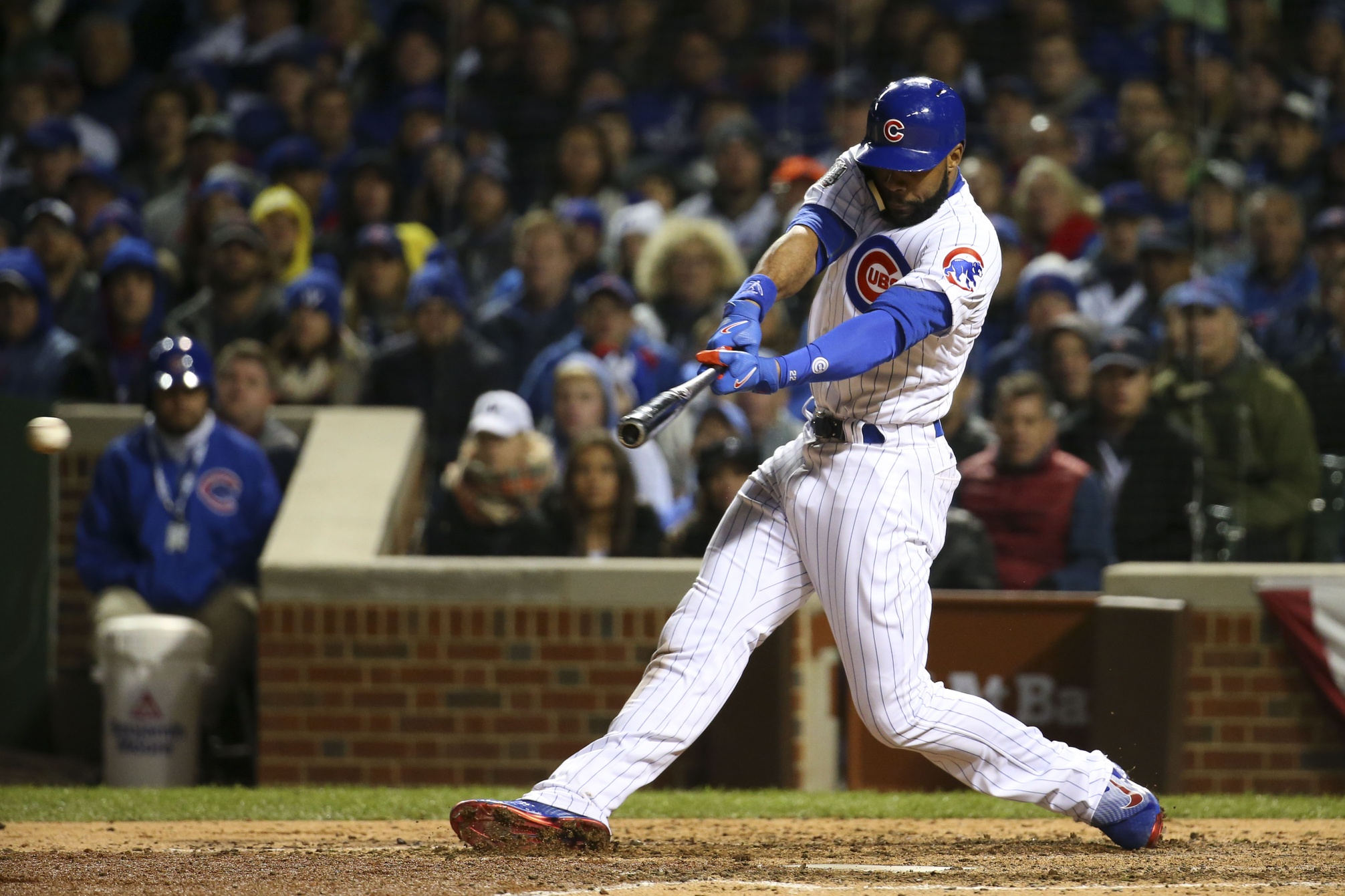Position: RF, CF
2016 Stats: .230/.306/.325, .237 TAv, -0.2 WARP
Year in Review: Before the start of the 2016 season, Joe Maddon praised Jason Heyward–then recently signed for eight years and $184 million–as a player possessing not five, but six tools. While Heyward’s identity as a power hitter has always been debatable (a debate complicated by the fact that the pure visual of Heyward at a muscular 6’5″ keeps daydreams of 30-home-run seasons perpetually on ice), he certainly wasn’t able to compensate by hitting for average in unquestionably his worst career year. Although his Gold Glove defense in right field produced National League-best marks for the position in DRS (14) and UZR (16.4), it still couldn’t save him from a painful -0.2 WARP, and eventually, it couldn’t save him a spot in the lineup either.
All of this leaves us with the sixth tool, and in the end—literally, the very end of Game 7—that was what made the lasting impact as far as the 2016 Cubs were concerned. The sixth tool: “Just the way he thinks,” Maddon explained.
In the rain delay which gave way to the end of a legendary drought, it was Heyward who had the instinct and initiative to call a now-legendary players-only meeting, reminding his teammates of their capabilities and re-centering the group on what was imminently attainable. Whereas Maddon’s trademark focus on process and the present had taken this group far indeed, Heyward’s timely oration was seemingly what it took to push them over the edge, just when a century’s pressure had begun to bleed into the actual challenge of what would be one single inning more.
It’s a tidy, feel-good triumph of narrative, even on top of the fact that most failures are easy enough to digest with a World Series ring on your finger. And to hear the Cubs speak of Heyward, it wasn’t any accident either that the right fielder was the one who stepped up. In a way, it was just the stand-out quality they signed him for.
Looking Ahead: Romance aside, the Cubs also signed Heyward to put up solid numbers at the plate, and where is there to go but up from those 2016 stats?
For much of the year, Heyward appeared to exist in some sort of personalized BAPIP purgatory, replete with endlessly looping ground-outs, soft contact, and slim launch angles all around. But it wasn’t a matter of lacking discipline, swinging at bad locations, or failing to read certain pitch types; Heyward’s walk and strikeout numbers hardly diverged from his career averages. 2016 was simply an across the board cooling off that’s hard to explain.
To look at Heyward’s basic heat maps from his career prior to 2016 (left) compared with the 2016 season (right) is enough to sober up after countless champagne celebrations. Not only is the overall decline apparent, but the way Heyward suddenly lost the ability to take advantage low in the zone runs completely counter to what made him one of the top free agents on the market after 2015.
Heyward hasn’t been shy in tinkering with his batting stance and approach throughout his career, and clearly he’ll have some mechanical, if not also timing issues, to work through this offseason. Given that none of his prior adjustments had quite the drop-off effect we saw this year, it’s not unreasonable to be optimistic about a return to form in 2017, and the winter is a much more suitable time for an overhaul and return to fundamentals.
Of course, where and how often Heyward will play in 2017 remains a question, one which will be partially dictated by whether he manages such a resurgence. With Kyle Schwarber returning, Ben Zobrist pushed increasingly into the outfield by Javy Baez’s well-earned stake at second base, and Albert Almora primed for quality time in center field, the Cubs have a logjam on their hands, even with Dexter Fowler most likely departing.
While right field is where Heyward looks best, he was in fact slated to be the Cubs’ starting center fielder heading into 2016, prior to Fowler’s surprise return. Should his batting numbers necessitate a reduced role, he could be a candidate for a platoon with Almora. A .238 average and .647 OPS split is generally something that would get a player benched against right-handed pitchers, but it beat Heyward’s .207 and .586 against lefties in 2016.
Only spring will tell whether last season becomes an improbable anomaly or unfortunate turning point in the course of Heyward’s career and contract, but fresh off a historic World Series victory is just about the most forgiving environment one could conceive of for an attempted do-over.
Lead photo courtesy Jerry Lai—USA Today Sports

Way to go, Clarissa. Apparently, takes an A’s fan to show that Emperor Heyward truly walked around naked this yr.